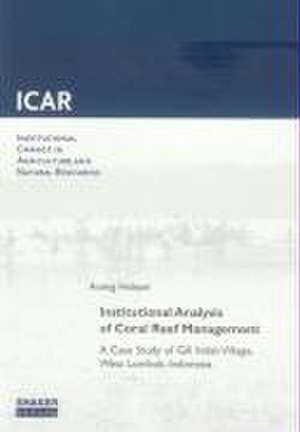Institutional Analysis of Coral Reef Management
Autor Aceng Hidayaten Limba Engleză Paperback – 30 iun 2005
Preț: 162.78 lei
Nou
Puncte Express: 244
Preț estimativ în valută:
31.15€ • 32.13$ • 25.99£
31.15€ • 32.13$ • 25.99£
Carte indisponibilă temporar
Doresc să fiu notificat când acest titlu va fi disponibil:
Se trimite...
Preluare comenzi: 021 569.72.76
Specificații
ISBN-13: 9783832238155
ISBN-10: 3832238158
Ilustrații: 29 schwarz-weiße Abbildungen
Dimensiuni: 148 x 212 x 15 mm
Greutate: 0.35 kg
Editura: Shaker Verlag
ISBN-10: 3832238158
Ilustrații: 29 schwarz-weiße Abbildungen
Dimensiuni: 148 x 212 x 15 mm
Greutate: 0.35 kg
Editura: Shaker Verlag
